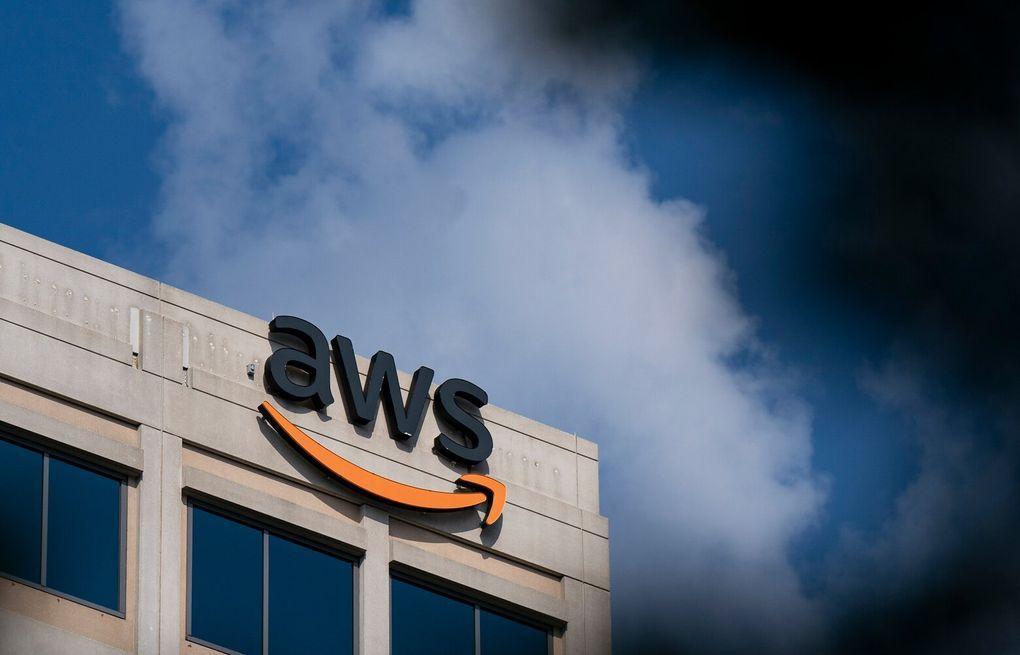AWS Accelerates to 20% Growth as AI Demand Fuels Cloud Infrastructure Boom
5 Sources
5 Sources
[1]
AWS exceeds Wall Street's expectations as demand for cloud infra remains high | TechCrunch
Amazon's cloud infrastructure service, Amazon Web Services (AWS), is on track to record its strongest year of growth in three years, fueled by the AI industry's unprecedented demand for computing power. AWS is growing 20% year-over-year and ended the third quarter with $33.1 billion in sales through the first nine months of the year, Amazon announced in its third-quarter earnings release on Thursday. The business segment's operating income increased to $11.4 billion in Q3, up from $10.4 billion at the same point in 2024. "AWS is growing at a pace we haven't seen since 2022, re-accelerating to 20.2% YoY," Andy Jassy, the president and CEO of Amazon said in the company's earnings announcement. "We continue to see strong demand in AI and core infrastructure, and we've been focused on accelerating capacity -- adding more than 3.8 gigawatts in the past 12 months." AWS launched an infrastructure region in New Zealand during the quarter and has three more regions in the pipeline. The cloud infrastructure provider also secured several new deals in Q3 across a variety of industries including a few notable names in the AI market. In July, AWS partnered with Perplexity to launch the AI browser company's enterprise product. AWS also partnered with Cursor during the third quarter. The intense infrastructure demands of AI have also been a boon to AWS's competitors. OpenAI and Oracle allegedly inked a massive $300 billion cloud compute deal in September that will start in 2027. The pair also made a deal for OpenAI to pay Oracle $30 billion a year for data center services. Last week, Google and Anthropic announced a cloud deal worth tens of billions of dollars. These huge deals come despite skepticism of how much cloud infrastructure will actually be needed in the future and if the industry is heading into bubble territory. However, it does makes sense for cloud companies like AWS to take advantage of a market where customers are willing to pay big sums for their services. "You're going to see us continue to be very aggressive in investing capacity because we see the demand," Jassy said about investing in AI infrastructure. "As fast as we're adding capacity right now, we're monetizing it." This news comes two days after Amazon announced it was slashing 14,000 corporate jobs, as it looks to invest more in its AI strategy.
[2]
Amazon earnings primer: Cloud dominance in focus after massive outage as rivals gain ground
Andy Jassy, CEO of Amazon, speaks during an unveiling event in New York on Feb. 26, 2025. Amazon is slated to post results for the third quarter after the closing bell Thursday. Here's what analysts polled by LSEG are looking for: Wall Street is also looking at other key revenue numbers: AWS growth will be a major focus for investors once again, as the company faces intensifying pressure from cloud competitors Google and Microsoft, which also reported quarterly results this week. Revenue at AWS is projected to expand 18.1% year over year, which is about the same growth rate as the second quarter. Google's cloud revenue accelerated 34% during the third quarter, while Microsoft Azure recorded growth of 40%. AWS stumbled last week during an extended outage that lasted more than 15 hours, taking down numerous websites as a result. Microsoft experienced outages in its Azure cloud and 365 services on Wednesday, hours before its scheduled earnings release. The Amazon unit is also battling the perception that it's missing out on a flurry of highly lucrative artificial intelligence deals for cloud services. Anthropic and Google deepened their cloud partnership last week in a deal worth tens of billions of dollars, while Meta has inked hefty cloud deals with Google and Oracle in recent months. Amazon on Wednesday opened its $11 billion AI data center called Project Rainier, which was first announced last December and is intended to train and run models from Claude chatbot creator Anthropic. Amazon, which has invested $8 billion in Anthropic, said the startup will use 1 million of its custom Trainium2 chips by the end of 2025. During last quarter's earnings conference call, investors grilled Amazon CEO Andy Jassy on AWS growth and AI competition. Jassy reiterated AWS has a "pretty significant" leadership position in cloud market share, while noting that it's still "early" days in the AI industry that remains "very top heavy" with a "small number of very large frontier models."
[3]
Amazon's $300 billion jump puts stock back in AI conversation
Amazon.com Inc. shares have been dogged for most of the year by concerns the company's cloud-computing business was losing ground to rivals. Those fears have been put to rest for the time being. With earnings results last week showing the fastest quarterly growth for Amazon Web Services since 2022 followed by a $38 billion cloud deal with OpenAI, there's mounting evidence that momentum is back for the critical unit. The one-two punch has delivered a 12% gain in four trading days, adding about $300 billion in market value to the stock and sending it to its first record since February. "Taken together, the results and OpenAI deal suggest that the acceleration in AWS growth could be sustainable," said Robert Pavlik, senior portfolio manager at Dakota Wealth Management, which has about $7 billion in assets. "Investors are going to have to take Amazon more seriously when they're considering how to invest in the AI space, since this shows it is one of the few companies that's coming through and delivering a tangible return from all the money it's spending." AWS has long been important to Amazon's stock performance because of the disproportionate share of operating income it generates compared with the retail business. Up until the third quarter, AWS's revenue growth had been slowing while rivals like Alphabet Inc.'s Google Cloud, Microsoft Corp.'s Azure and Oracle Corp. were gaining steam, weighing on Amazon's shares. While the stock's rally has helped make up for a lot of lost ground, Amazon remains an underperformer this year. The stock's 14% gain trails the S&P 500 and Nasdaq 100, which are up 16% and 22%, respectively. Amazon is also lagging behind three of the other six companies that comprise the so-called Magnificent Seven -- Nvidia Corp., Microsoft and Alphabet. Bulls are betting the under-performance won't last for long, however. Prior to last week, Amazon's valuation had been steadily trending downward, falling below 24 times estimated profits in mid-October for just the second time since the 2008 financial crisis. With momentum now behind AWS, investors see plenty of room for the multiple to expand. At 27 times projected profits, Amazon still trades at a significant discount to its average over the past decade, which stands at 47 times, according to data compiled by Bloomberg. Amazon shares could nearly double if its earnings multiple returns to levels from a few years ago, according to Evercore ISI analyst Mark Mahaney. "With materially increasing odds that AWS has recovered to becoming a sustainably 20%+ revenue growth segment, the stock opportunity ahead is for a material AMZN re-rating," he wrote in a research note on Nov. 3, referring to Amazon by its ticker symbol. AWS's revenue growth clocked in at 20% in the third quarter and is expected to expand in each of the next two quarters, according to the average of analyst estimates compiled by Bloomberg. The improved outlook has helped lift estimates for Amazon's 2026 earnings, which are up 2.5% over the past week. Of course, Amazon still faces stiff competition in the cloud business where it remains the biggest player. Microsoft and Alphabet also reported strong growth in their cloud units last week while Oracle's results in early September showed it's gaining ground quickly, even though its market share is the smallest of the group. Amazon's earnings report was enough to get Matt Tuttle back into the stock. The chief executive of Tuttle Capital Management, which oversees $4.5 billion in assets, said Amazon's under-performance up until last week was a big factor. "The cloud business is back, and if you look around the Mag 7 landscape, I think Amazon has gone from the laggard to the leader," he said. "Which do you want to buy right now? For me, it's Amazon." -- With assistance from Subrat Patnaik and David Watkins.
[4]
Amazon's AI Cloud Empire: Why AWS Still Reigns Supreme | The Motley Fool
Several rivals are breathing down AWS' neck. But Amazon's cloud unit remains No. 1. Once upon a time, the word "cloud" referred only to the white, puffy things you see in the sky. That's no longer the case. And one company played an especially key role in expanding the definition to include access to computing and storage resources on the internet: Amazon (AMZN +0.34%). To be sure, Amazon didn't invent cloud computing. However, the company's 2006 launch of Amazon Web Services (AWS) was a milestone in information technology infrastructure. Today, Amazon sits atop an artificial intelligence (AI) cloud empire. Here's why AWS still reigns supreme. You might read now and then that other cloud service providers are gaining ground on AWS. That's true. Microsoft (MSFT 1.44%) Azure, Alphabet's (GOOG +2.40%) (GOOGL +2.44%) Google Cloud, and Oracle's (ORCL +0.86%) cloud unit are all growing faster. However, AWS' revenue soared 20.2% year over year in the third quarter of 2025 to $33 billion. That's the fastest growth rate since 2022. Amazon CEO Andy Jassy is quite aware of the competition in the cloud market. However, he noted in his company's Q3 earnings call, "It's very different having 20% year-over-year growth on a $132 billion annualized run rate and to have a higher percentage growth rate on a meaningfully smaller annual revenue, which is the case with our competitors." Importantly, AWS' backlog rose to $200 billion by the end of Q3. Jassy said this figure didn't include new deals made in October that together were greater than its total deal volume for the entire third quarter. Gartner (IT +4.32%) has named AWS the leader in its strategic cloud platform services Magic Quadrant in each of the last 15 years. How is Amazon's cloud unit still on top? By giving customers the tools they need. Jassy believes that AWS offers "much broader infrastructure functionality" than rivals. In Amazon's Q3 earnings call, he highlighted two products that help customers build AI models -- SageMaker and Bedrock. SageMaker enables organizations to build and deploy their own large language models (LLMs), while Bedrock supports an array of the leading third-party models. Agentic AI is the next big thing in the AI world. AWS introduced AgentCore earlier this year to help customers develop secure and scalable AI agents. Jassy mentioned that the software development kit for AgentCore "has already been downloaded over 1 million times." This isn't the only agentic AI solution from AWS, though. Amazon's cloud unit recently previewed its Kiro integrated development environment for agentic AI coding. Jassy said that more than 200,000 developers have already checked it out. AWS also released its Transform agent for data migration and transformation. Customers have used the tool to reduce roughly 700,000 hours of manual effort so far this year. In the AI cloud market, capacity is king. And that requires massive amounts of power. AWS added more than 3.8 gigawatts of power in just the last 12 months. That's more than any other cloud provider. Amazon's cloud unit now has double the power capacity that it had in 2022. It's on pace to double the power capacity again by 2027. Cloud capacity to run AI applications also requires super-fast chips. Like other top cloud providers, AWS uses Nvidia's (NVDA 1.71%) GPUs. It also buys chips from AMD (AMD +2.46%) and Intel (INTC +3.65%). However, AWS has developed its own AI chips, too. Jassy said in the Q3 update that the unit's Trainium chip "is now a multibillion-dollar business that grew 150% quarter over quarter." Look for AWS to aggressively boost capacity going forward because of strong demand. Jassy summarized Amazon's opportunity by saying, "As fast as we're adding capacity right now, we're monetizing it." Amazon has other growth drivers in addition to AWS. The company remains the 800-pound gorilla in e-commerce, with robust sales and earnings growth. Advertising is an especially bright spot. Amazon is also expanding into new markets, including satellite internet services. Perhaps AWS will eventually be dethroned as the No. 1 cloud service provider. If that happens, though, the cloud unit will probably continue to deliver strong growth. And with its other strong businesses, Amazon could still reign supreme even if AWS doesn't.
[5]
Amazon exceeds expectations thanks to sustained growth at AWS, despite increased competition.
On Thursday Amazon announced a 20% increase in revenue for its AWS cloud division in Q3, reaching $33bn, above the $32.42bn anticipated by analysts. This performance confirms AWS's central role in the group's growth, despite increasing competitive pressure from Microsoft Azure (+40%) and Alphabet with its Google Cloud (+34%), which are gradually closing the gap with the industry leader. This announcement comes shortly after a major AWS outage that caused service interruptions for more than 15 hours. Amazon is trying to reassure its customers and consolidate its position in cloud infrastructure for artificial intelligence, a rapidly growing segment. The group recently inaugurated Project Rainier, an $11bn data center dedicated to AI, where models from Anthropic, a start-up in which Amazon has invested $8bn, will be run. Anthropic plans to use up to 1 million Trainium2 chips by the end of 2025. Faced with a proliferation of cloud contracts in AI, notably those signed by Meta with Google and Oracle, Amazon is seeking to demonstrate its capacity for innovation and its strategic commitment. Although its competitors are gaining ground, AWS continues to post solid growth, supported by its investments in AI and its customized infrastructure, key elements in maintaining its dominant position in a rapidly changing market. Furthermore, this publication marks the strongest growth rate in AWS revenue in three years, news that propelled Amazon's stock up nearly 10% in extended trading.
Share
Share
Copy Link
Amazon Web Services reports its strongest quarterly growth since 2022, reaching 20% year-over-year expansion driven by unprecedented AI infrastructure demand. Despite intensifying competition from Microsoft and Google, AWS maintains market leadership with $33.1 billion in Q3 revenue.
AWS Returns to High-Growth Territory
Amazon Web Services has delivered its most impressive quarterly performance in three years, with revenue growing 20.2% year-over-year to reach $33.1 billion in the third quarter of 2025
1
. This growth rate significantly exceeded Wall Street's expectations of $32.42 billion and represents a marked acceleration from recent quarters5
. The strong performance has been driven primarily by unprecedented demand for AI infrastructure, with CEO Andy Jassy noting that "AWS is growing at a pace we haven't seen since 2022"1
.
Source: Seattle Times
Market Response and Competitive Landscape
The earnings announcement triggered a dramatic market response, with Amazon's stock surging 12% over four trading days and adding approximately $300 billion in market value
3
. This rally has pushed the stock to its first record high since February, addressing investor concerns about AWS losing ground to competitors. Despite this success, Amazon faces intensifying competition from Microsoft Azure, which recorded 40% growth, and Google Cloud, which expanded 34% during the same period2
.Analysts note that while competitors are growing faster, AWS's scale advantage remains significant. As Jassy explained, "It's very different having 20% year-over-year growth on a $132 billion annualized run rate" compared to higher percentage growth on smaller revenue bases
4
.Infrastructure Investment and AI Capabilities
AWS has been aggressively expanding its infrastructure capacity, adding more than 3.8 gigawatts of power in the past 12 months alone
1
. This represents double the power capacity the company had in 2022, with plans to double it again by 20274
. The company recently opened its $11 billion Project Rainier data center, specifically designed for AI workloads and featuring Amazon's custom Trainium2 chips2
.
Source: Motley Fool
The Trainium chip business has become a significant growth driver, now generating multibillion-dollar revenue with 150% quarter-over-quarter growth
4
. Amazon's $8 billion investment in AI startup Anthropic is also paying dividends, with the company planning to use 1 million Trainium2 chips by the end of 20252
.Related Stories
Strategic Partnerships and Future Outlook
AWS secured several high-profile partnerships during the quarter, including deals with AI companies Perplexity and Cursor
1
. The company's backlog has grown to $200 billion, with new October deals exceeding the entire third quarter's deal volume4
.
Source: Market Screener
Despite recent challenges, including a 15-hour outage that affected numerous websites, AWS maintains its market leadership position
2
. Gartner has recognized AWS as the leader in strategic cloud platform services for 15 consecutive years4
. With analysts projecting continued growth in the coming quarters and Amazon's valuation still below historical averages, the company appears well-positioned to capitalize on the ongoing AI infrastructure boom.References
Summarized by
Navi
[1]
[3]
Related Stories
Recent Highlights
1
OpenAI releases GPT-5.2 AI model after code red memo targets Google's Gemini 3 threat
Technology

2
Disney invests $1 billion in OpenAI, licenses 200+ characters for Sora AI video generator
Technology

3
OpenAI faces wrongful death lawsuit after ChatGPT allegedly fueled murder-suicide tragedy
Policy and Regulation








